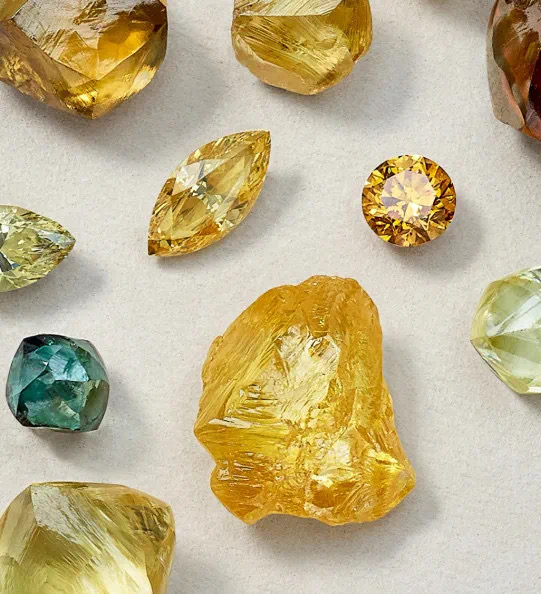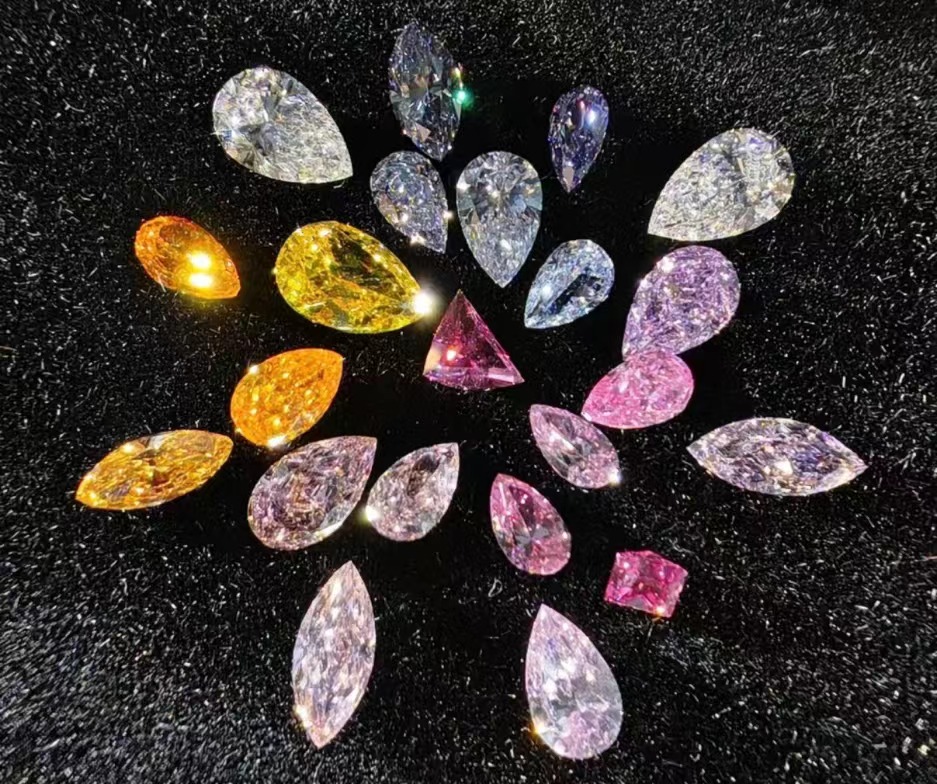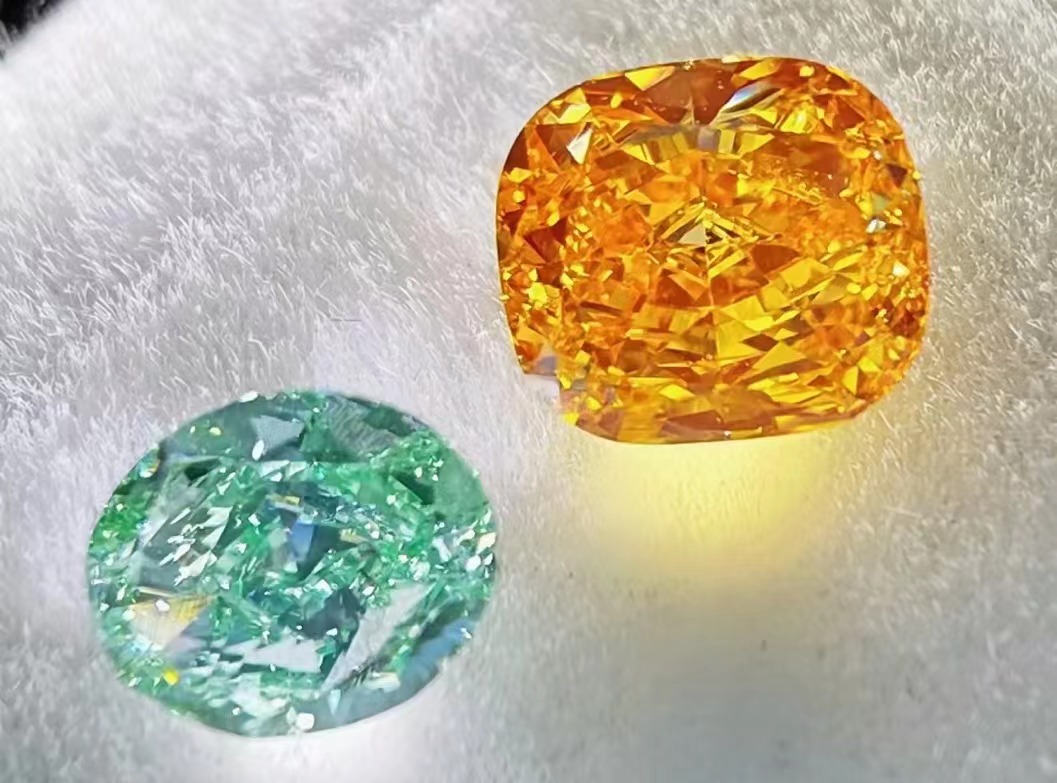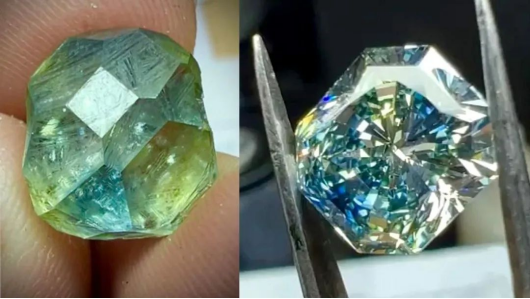In the past few hundred years, different coloured diamonds have appeared in history and have the identity of legendary witnesses. As the diamond magazine "Arpege Diamonds" once wrote in an article on the inventory of pink diamonds: "When you have coloured diamonds, you really have a history."
The probability of colour diamonds forming in nature is extremely small. According to statistics, 100,000 gemstone-grade diamonds have one colour diamond, and the probability of production is 1100,000. We know that the value of natural diamond is directly proportional to its rarity. Coloured diamonds account for only 2% of the total production of raw diamonds, each of which is a miracle of nature.
According to the classification of the International Association of Colored Diamonds (NCDIA), color diamonds are divided into the following nine categories:
Yellow diamonds, orange diamonds, pink diamonds, red diamonds, blue diamonds, purple diamonds, green diamonds, white diamonds, black diamonds

Relative output of various coloured diamonds:
Yellow diamonds: Compared with other colours, they are common, but yellow diamonds that reach the vivid level are rare and difficult to find. According to the statistics of the American Gem Association, less than 5% of the yellow diamonds identified by it are vivid yellow diamonds. However, the Ib-type "canary yellow" only accounts for 0.1% of natural diamonds.
Brown diamonds: In fact, 98% of diamonds mined have a brown tone, but most people don't like this colour.
Red diamonds: less than 100 in the world over 1 carat, and only 3 red diamonds produced about 1 carat in the Aguille mine in Australia in 2015. According to the data of the global diamond trading library, there are only 7 red diamonds, located in Israel (3 grains), Hong Kong (2 grains), the United States (1 grain) and India (1 grain).
Blue diamond: very rare, IIb type diamond, its colour comes from trace boron impurities. Like canary yellow, this diamond accounts for less than 1% of all diamond production.
Pink diamonds: 90% come from the Argyll mine in Australia, but they are rare, accounting for only 0.1% of the total production in the mine.
Green diamond: usually caused by natural radiation, and usually only as dark as skin tone. When the diamond is exposed to uranium mixture or alpha particles of groundwater, the diamond surface will turn green. If the diamond encounters beta and gamma rays at the same time, the diamond will appear a deeper green tone. Generally speaking, only a small part will become pure green.

Laboratory Cultivation of Coloured Diamonds
In 2020, Swarovski announced the first batch of laboratory cultivation of color diamonds, with a total of 16 cultivated diamonds of different colours. Everyone began to become familiar with the cultivation of coloured diamonds. Today, let's take a look at where these colours come from:
Yellow cultivated diamonds: brown-brown-yellow-orange yellow
The colour of yellow or orange-yellow diamonds cultivated by HPHT is due to the introduction of isolated nitrogen during the growth process. As the nitrogen content increases, the yellow of diamonds will become more and more bright. Most of the diamonds cultivated by CVD are lla-shaped, and the probability of forming bright yellow is extremely low. Most of the yellow-type cultivated diamonds are attributed to accidental or intentional infiltration of nitrogen. In short, the yellow colour in most cultivated diamonds is related to nitrogen, but due to insufficient control of nitrogen, the probability of forming bright yellow is still extremely low.
Blue-cultivated diamonds: It is reported that colourless HPHT colourless-cultivated diamonds usually contain a small amount of boron. The principle is to use the blue produced by boron to offset the yellow produced by nitrogen, thus making the whole diamond colourless. Most of the colours of blue CVD cultivated diamonds come from radiation.
Red cultivated diamonds: including pink-purple-orange-orange-red. The colour of pink HPHT-cultivated diamonds and CVD-cultivated diamonds (including purple-pink, red and brown-red) are basically attributed to the diamond's treatment through irradiation and low-temperature annealing after growth.
However, the number of powder diamonds artificially cultivated in the laboratory is very large, and the pink colour is basically attributed to the fact that the diamonds are treated by irradiation and low temperature annealing after growth. In this process, the N-V centre is produced, which mainly absorbs yellow and orange-yellow light, resulting in diamonds appearing pink-red, which is also the colour source of most pink diamonds.
Green cultivation diamonds: The colour source of green HPHT and CVD laboratory cultivation diamonds is very similar to that of natural green diamonds. Basically, the colour is produced through later irradiation, so that the diamond can appear green. Similarly, the green in natural diamonds is also formed by it.

In addition, rare coloured diamonds are sold at auction, so it is sometimes difficult to judge their value. There is also a super magical discoloured diamond that changes colour under extreme high temperatures or ultraviolet rays, and rarely enters the market.
From the above description, we can see that even under laboratory conditions, the production of colored diamonds is quite difficult.
Recently, we saw a piece of news: IGI recently tested two special "two-colour" diamonds, each of which has two colours at the same time. Two-color diamonds are grown by Meylor Global in Kiev using the high temperature and high pressure method. A Redion-shaped bare diamond, weighing 4.38 carats and a clarity of VVS2, its colour is depicted as Fancy Deep Greenish Blue, that is, "brilling dark green and blue". The other is a 10.96-carat blank, which shows two specific blue and yellow color areas at the same time.
This charming colour is made by adjusting nitrogen and boron by strictly controlling pressure, temperature and growth rate. This makes the "color customization" of cultivating diamonds closer and closer to us.

